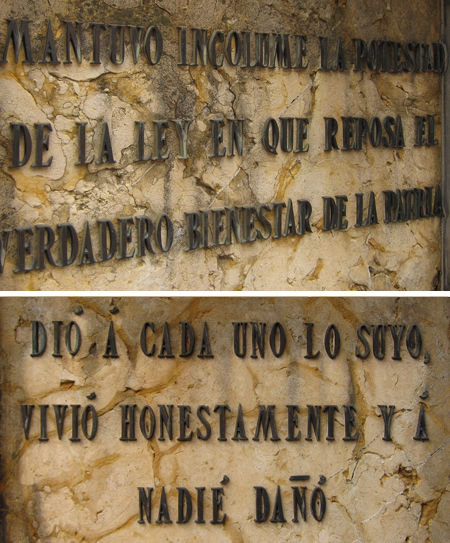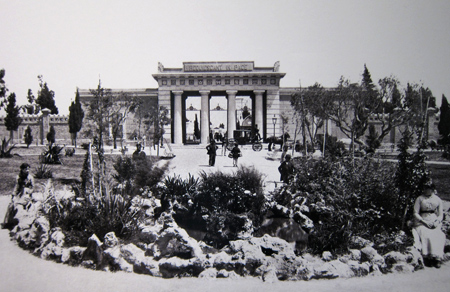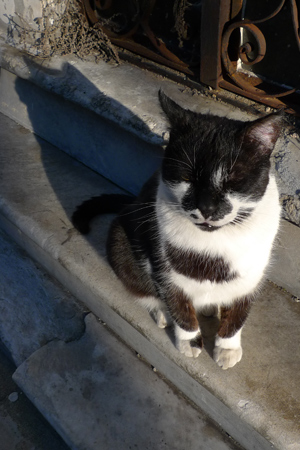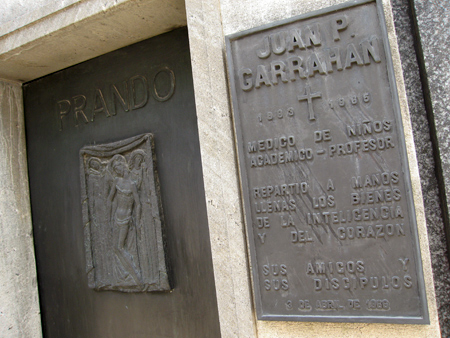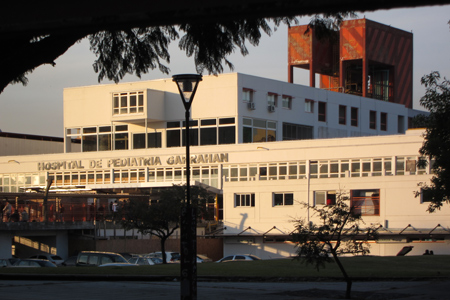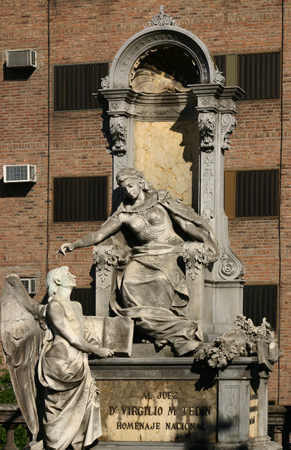
Born in Salta in 1850, Virgilio Mariano Tedín Tejada joined the local elite by marrying Flor de María Uriburu Arenales—sister of future President José Evaristo de Uriburu… who in turn was uncle to Argentina’s first military dictator, José Félix Uriburu. It’s all in the family.
Seemingly at odds with future cousins, Tedín earned respect as a fair national judge during the complicated 1890’s. After the failed revolution, he did his best to ensure fair treatment of Leandro N. Alem & other activists. Tedín died at the age of 42, & this tomb was paid for by public donations… remarkable for a federal judge:
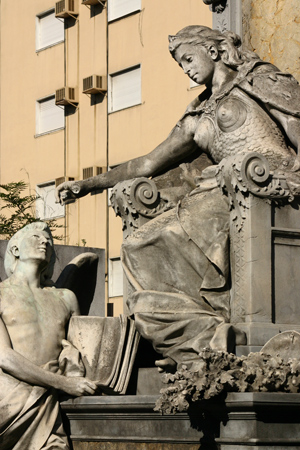
Sculpted in 1899 by Miguel Sansebastiano—also the author of Toribio de Ayerza‘s tomb—a seated female figure representing Justice (find the fallen scales) crowns an angel. Today, the wrought-iron crown (perhaps of laurel?) is missing along with her thumb, but a fuzzy version can be seen in the 1900 photo by Harry Grant Olds. The angel’s book contains three unreadable words, worn over time… looks like “??? y senteacea” but that’s merely a guess. Left & right inscriptions read respectively:
Mantuvo incólume la potestad de la ley en que reposa el verdadero bienestar de la patria / Dio a cada uno lo suyo, vivió honestamente y a nadie dañó.
He upheld authority of the law in which lies the true wellbeing of the nation / He gave himself to each individual, lived honestly & harmed no one.
